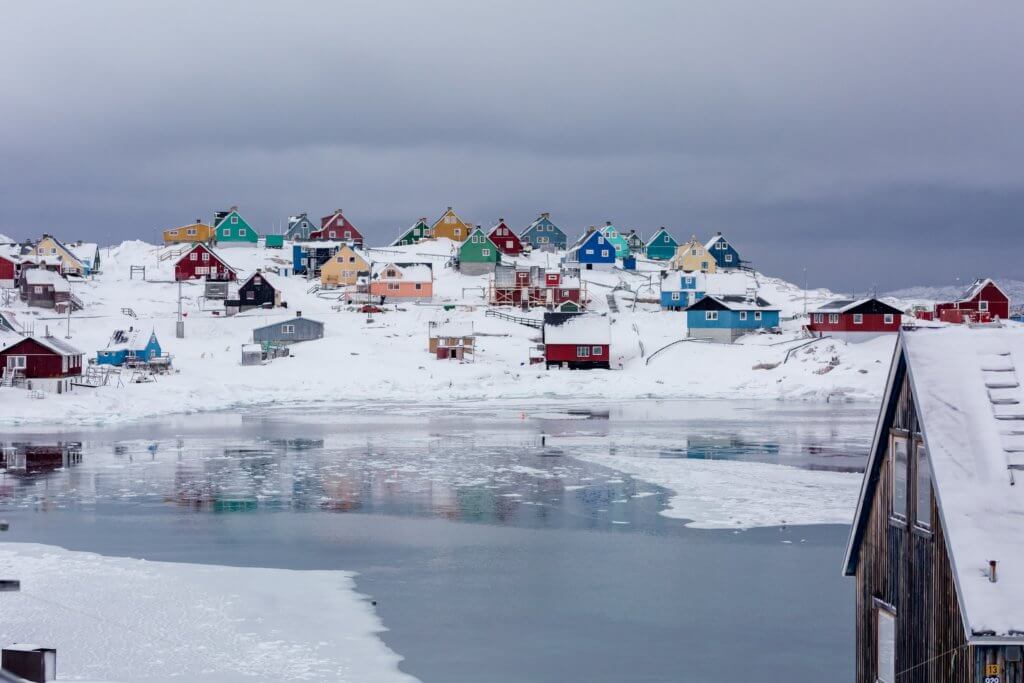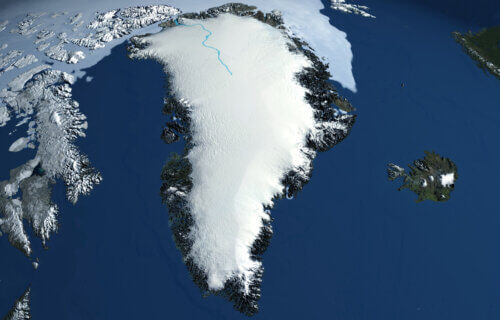BURLINGTON, Vt. — Greenland was largely ice-free and green less than half a million years ago, a new study reveals. The findings contradict the widely held belief that the Greenland ice sheet has been in existence for two-and-a-half million years. Scientists now postulate that much of it was probably tundra, populated with trees and wooly mammoths in prehistoric times.
According to the researchers, moderate warming between 424,000 and 374,000 years ago led to significant melting, causing a global water level rise of between five and 20 feet. The research team from the United States indicates that, given the current higher atmospheric levels of heat-trapping carbon dioxide, the ice sheet may be more susceptible to human-induced climate change. This could make it vulnerable to irreversible, rapid melting in the forthcoming centuries.
The potential for a 23-foot global sea level rise is currently trapped in the Greenland ice. If this were to melt, every coastal city and town would be under threat.
The research involved 14 institutions, led by the Universities of Vermont and Utah. The team used sediment from a long-lost ice core, collected at a secret U.S. Army base during the 1960s, to make this significant discovery.
During the Cold War, a covert U.S. Army mission at Camp Century in northwestern Greenland drilled down through 4,560 feet of ice on the frozen island. They continued drilling to extract a 12-foot-long tube of soil and rock from below the ice. This camp served as a front for a top-secret operation known as Project Iceworm, which aimed to conceal hundreds of nuclear missiles under the ice near the Soviet Union, ostensibly functioning as a research center. However, they did drill the core studied by the current team of researchers.
This icy sediment was misplaced in a freezer for several decades until it was inadvertently rediscovered in 2017. The sediment held not only soil and rock, but also leaves and moss — remnants of an ice-free landscape, possibly a boreal forest. After dating the sediment using advanced luminescence and isotope techniques, the team concluded that Greenland was green as recently as 416,000 years ago, with an error margin of approximately 38,000 years.

The area, currently three times the size of Texas, now features ice that is two miles thick. Prior to this study, other scientists working in central Greenland collected data indicating that the ice there had melted at least once in the last 1.1 million years. However, until the publication of this research in the journal Science, it remained unknown exactly when the ice disappeared.
The new study provides direct evidence that sediment just beneath the ice sheet was deposited by flowing water in an ice-free environment during a moderate warming period. This melting resulted in at least a five-foot rise in global sea levels.
“It’s really the first bulletproof evidence that much of the Greenland ice sheet vanished when it got warm,” says the University of Vermont’s Paul Bierman, a scientist and co-study author, in a media release.
“Greenland’s past, preserved in twelve feet of frozen soil, suggests a warm, wet, and largely ice-free future for planet Earth,” adds Bierman, a geoscientist in UVM’s Rubenstein School of the Environment and Natural Resources and a fellow in the Gund Institute for Environment, “unless we can dramatically lower the concentration of carbon dioxide in the atmosphere.”
“We had always assumed that the Greenland ice sheet formed about two and a half million years ago—and has just been there this whole time and that it’s very stable,” says Tammy Rittenour, a scientist at Utah State University and a co-author of the new study.
“Maybe the edges melted, or with more snowfall it got a bit fatter—but it doesn’t go away and it doesn’t dramatically melt back. But this paper shows that it did.”

Rittenour warns that if the same happens, many cities could be in trouble. The new study provides strong and precise evidence that Greenland is more sensitive to climate change than previously understood — and at grave risk of irreversibly melting off.
Camp Century is 138 miles inland from the coast and only 800 miles from the North Pole. The study shows that the region entirely melted and was covered with vegetation during Marine Isotope Stage 11, a long interglacial with temperatures similar to or slightly warmer than today.
With this information, the team’s models show that, during that period, the ice sheet melted enough to cause at least five feet, and perhaps as much as 20 feet, of sea-level rise.
“If we melt just portions of the Greenland ice sheet, the sea level rises dramatically,” says Rittenour. “Forward modeling the rates of melt, and the response to high carbon dioxide, we are looking at meters of sea level rise, probably tens of meters. And then look at the elevation of New York City, Boston, Miami, Amsterdam. Look at India and Africa—most global population centers are near sea level.”
South West News Service writer Jim Leffman contributed to this report.
You might also be interested in:
- Greenland ice sheet destabilizing, climate scientists fear a ‘worrying’ transition is close
- Last 10 years have been the worst for polar ice sheet melting ever recorded
- Mysterious ‘Blue Blob’ near Arctic may be protecting glaciers from climate change


And we must sacrifice all freedom to prevent it from being so again.
Probably more like 6,000-10,000 years ago where a pressurized oxygen-rich global atmosphere would create a world-wide subtropical environment with UV rays being filtered by the outer enclosure. Such a scenario is the only condition that would create an atmosphere dense enough for pterodactyls to fly.